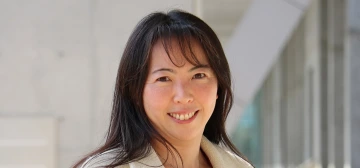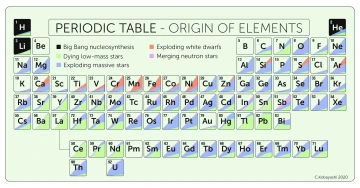Chiaki Kobayashi, University of Hertfordshire

When
Refreshments served it the 3rd floor atrium
TAP Colloquium
Chiaki Kobayashi, University of Hertfordshire
Title: Cosmic Chemical Enrichment in the Era of JWST

Abstract: Abstract: The James Webb Space Telescope is expected to find the first galaxies - those hosting metal-free (known as Pop III) stars. Surprisingly, though, galaxies with strong metal lines have been detected indicating unusual chemical composition (e.g. high N/O ratio). During the Big Bang, only light elements such as hydrogen and helium were produced. Carbon and heavier elements are created inside stars and are ejected when they die. Iron-peak and neutron-capture elements are further produced by binaries - Type Ia supernovae and neutron star mergers, respectively. Elemental abundances of stars, together with kinematics from the Gaia satellite, have been extremely useful for constraining stellar astrophysics, as well as the star formation and chemical enrichment history of the Galaxy. This approach, Galactic Archaeology, can now be applied to external galaxies thanks to spectroscopic surveys of galaxies across cosmic time. For comparing to these observations, we have been running hydrodynamical simulations following detailed chemical evolution from cosmological initial conditions. Metallicity is higher in more massive galaxies (leading to the mass-metallicity relation), and at the centre of galaxies (causing metallicity radial gradients) — simulations can successfully reproduce these relations at the current epoch, but not at higher redshifts, which is probably due to our incomplete understanding of feedback from stars and active galactic nuclei. The observed high N/O ratios can be explained with Wolf-Rayet stars under intermittent star formation, or may indicate the existence of very or super massive stars linking to the origin of super-massive black holes. Using more elements (CNO, Ne, and Ar), it will be possible to constrain these scenarios.
Bio: Chiaki Kobayashi is recognized as the international leader in galactic chemical evolution. Soon after the PhD from University of Tokyo in 2002, she worked at Max-Planck Institute for astrophysics in Munich, National Observatory in Japan, and then became the Stromlo fellow at the Australian national University in 2008. She moved to the UK in 2011 to take up a faculty position at University of Hertfordshire, where she is a professor of astrophysics since 2021. Her recent work in linking the present-day Milky Way to the high-redshift universe, and she was awarded for 2024 George Darwin Lectureship from the Royal Astronomical Society.
Links:

